Thomas Commerford Martin & Nikola Tesla: 'The Inventions, Researches and Writings of Nikola Tesla' (New York: The Electrical Engineer, 1894)
acquired in 2021
acquired in 2021
This book is an illuminating new addition to the library's collection of works on the history of electrical engineering.
The subject and joint author, Nikola Tesla (1856 – 1943), was born in the village of Smiljan in the Austro-Hungarian Empire in 1856. After studies in Graz, he travelled, worked in Paris for the Continental Edison Company, then emigrated to the United States in 1884. It was there within a decade of untiring invention, that Tesla came to enjoy a considerable amount of fame for his electrical devices. After his death in 1943, however, he slipped from public recognition. It is only with the increasing spread of electronic devices into our daily lives – not to mention the rise of a prominent brand of electrical vehicles bearing his name, though with no direct connection to the inventor himself – that Tesla has once again become a household name for his role in the history of science.
Tesla's career coincided with the end of the epoch of the great scientist-showman in the United States. This book exists as a much out of his want to self-publicize as to make a valuable contribution to the progress of electrical engineering. As it stands, he managed to do both. Within its 43 chapters it provides an overview of the astonishing breadth of his early work. These include selected transcripts of Tesla's lectures through to the details of his designs for different electrical devices and the principles behind their function.
In the late-19th century, patent law was still developing and Tesla's contemporaries, such as one-time mentor Thomas Edison (1847 – 1931), were continually lodged in battles over rights to inventions such as the light bulb or microphone. This book therefore represents a very necessary staking of territory, in which he was assisted by Thomas Commerford Martin (1856 – 1924), a fellow electrical engineer and skilled editor.
The year of its compilation, 1893, was an important one for Tesla. Together with the industrialist George Westinghouse (1846 – 1914), he had undercut a bid by Edison to provide electrical lighting for the Chicago World's Fair. This was a key moment of the so-called 'War of the Currents'. Edison was pushing for an electrical grid powered by direct current (DC) and Westinghouse for alternating current (AC). Tesla's inventions made AC the more viable and set a precedent that became and remains the standard for the American electrical grid. It was a feat of engineering that stunned visitors to the exhibition halls, among them L. Frank Baum (1856 – 1919), who drew on this experience to create the Emerald City in his 1900 novel The Wizard of Oz.
Whether or not Tesla was inspiration for the wizard himself is up for debate, yet as the volume's copious and detailed illustrations attest, he could easily have been mistaken for one when surrounded by leaping electrical arcs and glowing wireless orbs.
This, Tesla's first book of engineering, inspired many subsequent inventors, such as Edwin Armstrong, the inventor of FM radio. He described reading this book as both "profound and decisive". It can be hoped that this exemplar will also have such an influence as it takes its place alongside works by Boyle, Franklin, Priestley and Salvator dal Negro in the Iron Library's well-established collection on the history of electrical engineering.
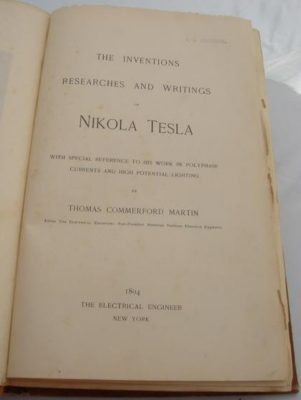 The title page
The title page
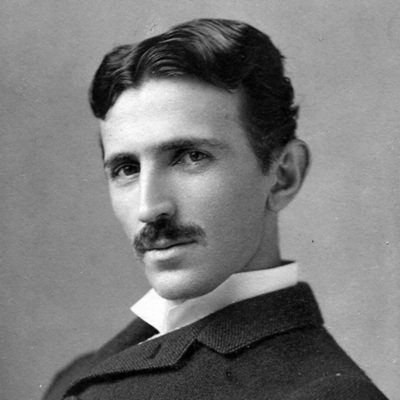 Tesla in 1893
Tesla in 1893
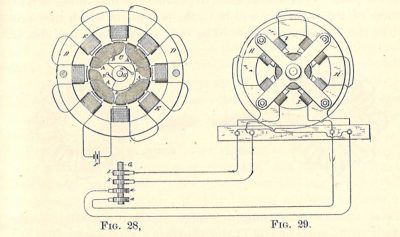 Tesla's designs for high-power AC generators
Tesla's designs for high-power AC generators
 Alternative designs for light bulbs
Alternative designs for light bulbs
 Tesla's design for a system of wireless lighting
Tesla's design for a system of wireless lighting
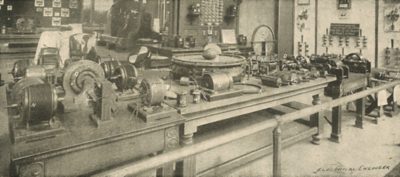 An array of coils and conductors in the inventor's laboratory
An array of coils and conductors in the inventor's laboratory
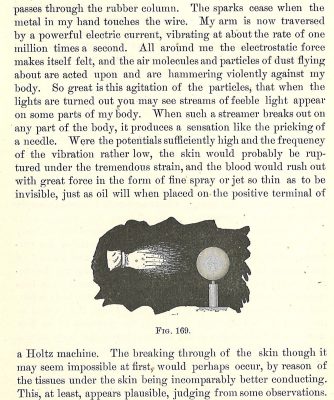 Don't try this at home: Tesla describes the expecience of his body conducting high electrostatic currents!
Don't try this at home: Tesla describes the expecience of his body conducting high electrostatic currents!